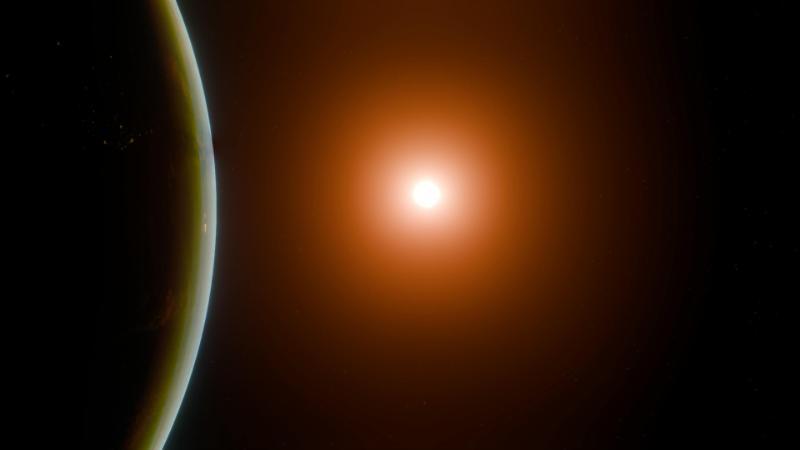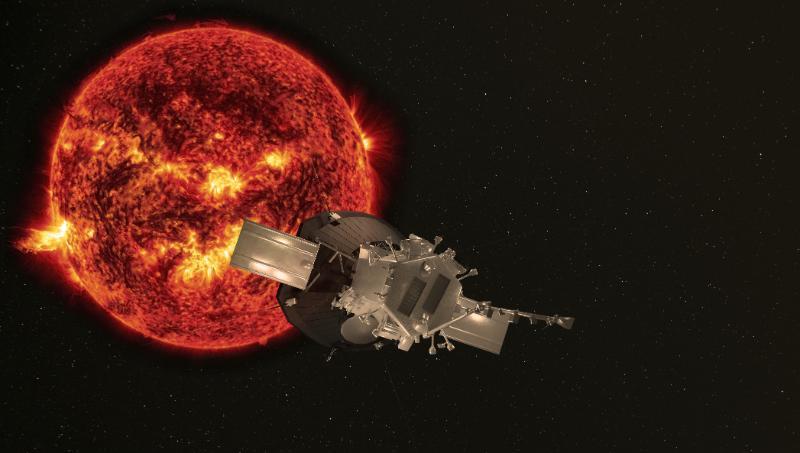
Space plasma insights could help protect us from the harms of space weather
Space plasma insights could help protect us from the harms of space weather
At a glance
-
The Sun greatly influences our solar system, as well as our society here on Earth - including through its role in space weather.
-
Space weather can cause significant damage on Earth, including electricity blackouts, that may cause trillions worth of damage to the global economy.
-
A team in Queen Mary University of London’s Astronomy Unit is researching how space plasma behaves, at both a fundamental level and its contribution to space weather.
-
The researchers use data from spacecraft, computer simulations and lab experiments to understand how various space plasma processes work.
-
One potential - but highly valuable - outcome of the research is improved space weather forecasts that allow us to better protect society from its harmful effects.
Risks of space weather to society
Space weather events can significantly disrupt the critical infrastructure that underpins our daily lives and the economy.
Their impacts include electricity blackouts, loss of radio signals and GPS outages. The UK government lists severe space weather in the National Risk Register, signalling it as a priority for planning and preparation.
Gaining a deeper understanding of space plasma – the state of matter that makes up the universe – is a key step in advancing our understanding of space weather and how to manage its impacts.
Queen Mary research led by Dr Christopher Chen (Department of Physics and Astronomy) is building a fundamental picture of how different physical processes in space plasma work.
These insights have the potential to improve space weather forecasts that:
- help industries prepare for disaster
- cut space weather’s immense costs to society
The research further informs a public engagement programme to spark broader interest in STEM.

Research
The Sun expels plasma in the form of solar wind and more explosive outbursts, such as coronal mass ejections, that travel through space and reach Earth, leading to space weather events.
Many processes within this space plasma remain to be fully understood, limiting our ability to predict space weather accurately.
Chen’s research investigates how these processes work and their implications for space weather forecasting.
His team analyses new data from cutting-edge space missions, including NASA’s Solar Parker Probe – the first spacecraft to fly up close to the Sun. Large computer simulations and laboratory plasma experiments further reveal the workings of these complex plasma phenomena.

Improved space weather forecasts
Outcomes of the research will include essential insights into:
- turbulence in space plasma – a long-standing and important scientific problem
- how different types of solar wind are generated
- why different solar winds develop their various properties
These findings will not only enhance our understanding of space plasma at a fundamental level. They should also allow space weather forecasts to make more accurate predictions by incorporating more realistic physics.
While many space weather events are harmless, more severe forms can significantly interfere with modern infrastructure. Forecasters cannot provide much warning of a severe event, or its precise consequences, due to the limitations of current predictions.
Chen’s research may lead to advances that help overcome some of these limitations, enabling longer warning periods and a more detailed picture of an event’s impacts.
Organisations that conduct forecasts include the UK’s Met Office and the USA’s National Oceanic and Atmospheric Administration (NOAA).
Protecting the economy and communities
By leading to more advanced forecasting capabilities, Chen’s research could also help protect society from disruptions that include:
- extended electricity blackouts (as occurred in Canada in 1989)
- loss of communications caused by interference with radio signals
- GPS outages
Directly affected sectors include energy, public services, aviation and agriculture. But impacts ripple across the globe: another blackout on the scale of the Canadian 1989 event could cost the global economy US$2.4–3.4 trillion over a year, and a GDP loss of 3.9–5.6%, by disrupting business supply chains. This scale of economic damage is of the same order as wars, extreme financial crisis and climate change.
Better forecasts could cut these impacts considerably, reducing the cost of a major coronal mass ejection to the UK economy by over two thirds – from £2.9 billion to £0.9 billion, while also protecting communities from interrupted public services.
Inspiring the next generation of scientists
Astrophysics offers the wider public a captivating glimpse into STEM. Chen and his team will draw on this research programme to deliver a series of a public engagement events designed to inspire young people’s interest in STEM subjects and pursue careers in these fields.
These events will build on Dr Chen’s previous experience of public engagement, including his participation in science festivals, schools outreach activities and interviews with the media.
Key takeaways
-
Fundamental research provides robust foundations for innovations that enable us to tackle complex challenges and enhance our quality of life. Queen Mary’s space plasma research exemplifies this and the importance of sustained funding for fundamental research.
-
The research fills long-standing gaps in our understanding of how the universe works.
-
Its insights not only satisfy scientific curiosity, but could also help us protect society and the economy from the harms of space weather.
-
The research team envisage future collaboration opportunities for space weather forecasters as results of interest emerge from the project.
